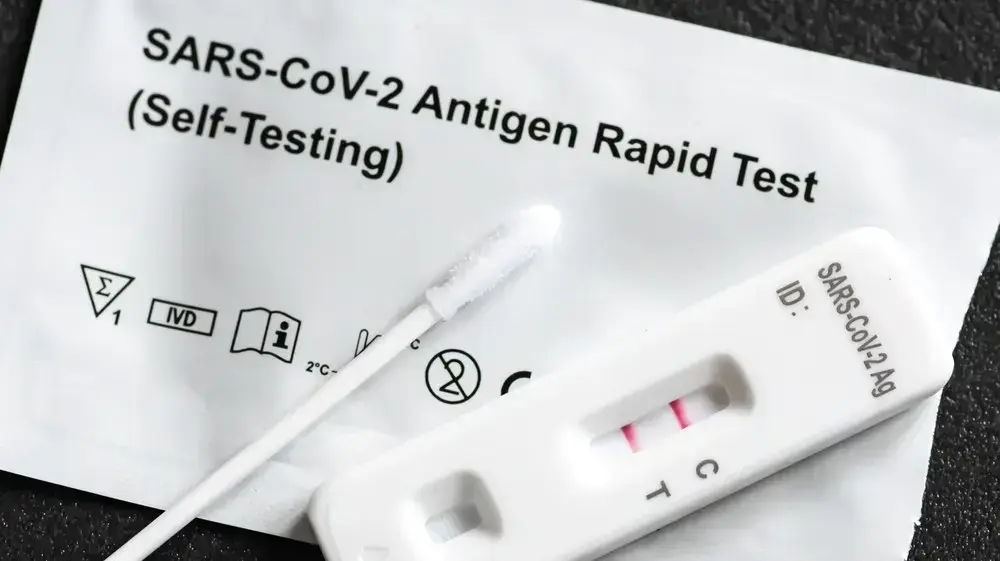health
Written by: Liao Qingxia
2020-11-10 14:18
Last update date: 2020-11-10 15:13
There have been outbreaks of upper respiratory tract infections in many schools in Hong Kong. The Centre for Health Protection (9th) announced that it is investigating 5 outbreaks of upper respiratory tract infections, involving three nursery schools, one kindergarten and one elementary school, located in Sham Shui Po and Yuan. A total of 131 school children and 4 staff in Long, Sha Tin, Tung Chung and Yau Ma Tei were infected.
What exactly is an upper respiratory tract infection?
Who are at high risk?
There have been outbreaks of upper respiratory tract infections in many schools in Hong Kong. The Centre for Health Protection is investigating five outbreaks of upper respiratory tract infections, involving three nursery schools, one kindergarten and one elementary school.
(Profile picture/Photo by Deng Yinglin)
Related Articles:
127 students in 5 schools have upper respiratory tract infections and dozens of students in another village school fell ill after visiting Ocean Park
Patients with upper respiratory tract infections will experience symptoms such as cough, sore throat, runny nose, fever, etc., which can be spread through droplets or indirect contact.
So what is the difference between upper respiratory tract infection and new coronary pneumonia?
▼ An upper respiratory tract infection is a cold? Need antibiotic treatment? (According to the picture 👇👇👇)
+13
+13
+13
1) What is an upper respiratory tract infection?
Upper respiratory tract infection, which is what we often call "cold and flu," generally refers to infection of the nasal cavity, sinuses, pharynx, throat and vocal cords.
Mainly caused by viruses, but can also be caused by bacteria.
Common examples of viral infections are colds and influenza.
2) What are the symptoms of upper respiratory tract infection?
Symptoms of upper respiratory tract infection include cough, sore throat, runny nose, fever, headache and muscle pain.
▼ How long does an upper respiratory tract infection last on average? (According to the picture 👇👇👇)
3) What are the transmission routes of upper respiratory tract infection?
Upper respiratory tract infections can be spread through:
• Droplet transmission: inhalation of the droplets produced by the patient when coughing, sneezing or speaking comes into contact with mucous membranes
• Indirect contact transmission: touching the surface (such as door handles, handrails) contaminated by patient secretions with both hands, and then touching one's mouth, nose or eyes to bring viruses/bacteria into the body or spread to others
4) Do I need to take antibiotics for upper respiratory tract infections?
Most upper respiratory tract infections are caused by viruses and do not require antibiotics.
Antibiotics can only be used to treat bacterial infections.
Inappropriate use of antibiotics not only has a chance of unnecessary side effects of drugs, but also kills normal bacteria in the body at the same time, increasing the risk of infection with drug-resistant bacteria, making treatment difficult.
5) Who is at high risk for upper respiratory tract infections?
▼Persons at high risk of upper respiratory tract infection are more likely to have serious illnesses and complications (as shown in the picture 👇👇👇)
6) What is the difference between upper respiratory tract infection and new coronary pneumonia?
Upper respiratory tract infections have similar symptoms to new coronary pneumonia, including fever, cough, sore throat, runny nose, muscle pain and headache.
New coronary pneumonia:
or accompanied by lower respiratory tract symptoms, such as chest tightness, pain behind the breastbone when coughing, wheezing when walking and talking, hot body, easy to feel cold, etc.
Related articles:
[New Coronary Pneumonia] Symptoms become milder and more covert
Some patients lose their sense of taste and smell.
Some experts pointed out that respiratory viruses can impair the body's ability to perceive odors, so it is common for people infected with the virus to lose their sense of smell.
In addition to loss of taste or smell, some patients with new coronary pneumonia have rashes. The British "King's College London" survey found that 17% of confirmed patients have rash as the first sign of infection with the new coronavirus; and 21% of those diagnosed even pointed out , Rash is their only symptom.
▼ Other symptoms of new coronary pneumonia (click the picture 👇👇👇)
+31
+31
+31
Related articles:
[New Coronary Pneumonia] Are you afraid of getting the virus if you have a fever?
One article to understand the 5 differences between new coronary pneumonia and a cold
7) Are there any sequelae of upper respiratory tract infection?
Influenza: less sequelae
Cold: no sequelae
New coronary pneumonia: permanent damage (such as pulmonary fibrosis)
The lungs of patients with new coronary pneumonia are damaged or cause respiratory failure. Even if the patients recover, some people may suffer permanent lung damage.
In addition, the liver may also be damaged, some of which are serious, or cause liver failure.
Related articles:
[New Coronary Pneumonia] Viruses like SARS attack all organs?
Damage the lungs, liver, kidneys and stomach
8) How to prevent upper respiratory tract infection?
▼ To prevent upper respiratory tract infection, we must take the following measures (as shown in the picture 👇👇👇)
(Source: Department of Health)
Related articles:
[Immunity] Probiotics Garlic and Mushroom Anti-infection
Article
Understand 28 Tips for Improving Immunity
+18
+18
+18
[Influenza vaccine] Is fever normal after flu shot?
Seek medical attention for 7 major adverse reactions with rash
[Influenza Vaccine] 15 Tips for Influenza Injections, 5 categories of people should not be vaccinated to reduce the spread of new coronavirus?
[Sore throat] Difficulty swallowing is flu?
Tonsillitis?
6 major symptoms to distinguish 4 types of sore throat diseases
[Winter flu] Symptoms are also sore throat and fever?
Teach you to distinguish between flu and cold
[Fever] How to distinguish infection with new coronary pneumonia?
5 key points to deal with fever, sweating aggravates the condition
[New Coronary Pneumonia] A fever in the morning may not necessarily equal 37 degrees to a fever?
6 tips for taking body temperature
01Health
Disease decoding cold flu sore throat fever urban health












/cloudfront-eu-central-1.images.arcpublishing.com/prisa/KMEYMJKESBAZBE4MRBAM4TGHIQ.jpg)


